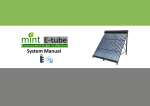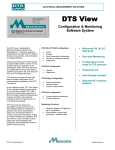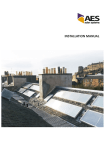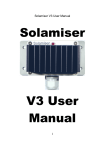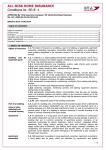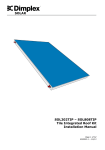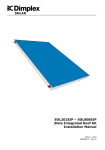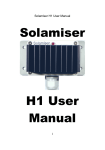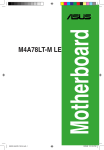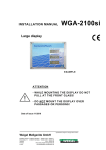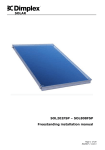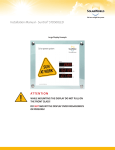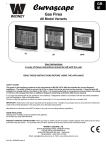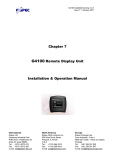Download - H2 Solar Shop
Transcript
Operation Manual Asis One Collector This is an important document keep it in a safe place 2012 mint renewables Mint Renewables Limited Fockbury House Fockbury Road Dodford Bromsgrove Worcestershire B61 9AP Phone - 01527 711591 Email - [email protected] CERTIFICATE BBA0133 mint renewables Table of contents Design and Survey .............................................................................. 3 General Terms and Conditions............................................................ 6 Safety Precautions...............................................................................7 System Planning.................................................................................. 9 System Installation.............................................................................. 10 Installation Schematic......................................................................... 13 Hydraulic Configurations .................................................................... 14 General Information............................................................................16 Technical Data......................................................................................17 System Commissioning........................................................................18 Design and survey report Date: Reference: Completed by: Surveyor contact no.: Client details: Domestic hot water (DHW) 1. System type: DHW plus space heating Swimming pool heating 2. Name: Building type (if house record whether detached, semidetached or terraced): Address: House ................... Block of flats Sheltered housing Commercial (describe) .................... Tel.: 3. Number of storeys .................... Mobile: 4. Approximate age of building .................... E-mail: 5. Is building listed? Yes/No 6. Is building in conservation area? Yes/No Low (circa 50%) 7. Solar fraction: Medium (circa 60%) High (circa 70%) 8. No. of occupants: 9. Approximate daily hot water usage (at 50oc) per occupant: Low (30 litres) Medium (50 litres) High (70 litres) Design and survey report (continued) 10. 11. 12. 13. Type of fuel used for water heating (and approximate annual consumption in kWh) Hot water storage type Does property have combiboiler? 19. Gas ............kWh Oil ............kWh LPG ............kWh Electricty ............kWh Solid fuel ............kWh 20. Vented 21. Unvented Yes/No If yes, type: Pitched roof Available roof space Width Height up roof Any roof obstructions (e.g. Dormer, skylight, chimney stack) ..........................m ..........................m .............................. Please sketch the proposed location of the solar collectors relative to the roof plan of the building .............................. Flat roof Proposed location for solar Ground mounted collectors Frame mounted on wall 14. 15. Roof orientation 16. Type of roof covering (eg. Slate, flat tile, pan-tile etc.) 17. 18. Roof condition Roof pitch Any shading (eg. none, from a tree, from a structure, part of the day, a lot of the day) 22. 23. 24. Are there any access restrictions for erecting scaffold? (if so, draw on sketch in 21) For pitched roof, collectors are to be: .............................. Mounted on-roof Roof-integrated Space for solar Height cylinder(s) in airing Width cupboard/plant room Depth ..........................m ..........................m ..........................m Design and survey report (continued) Volume 25. Proposed solar cylinder type Number of coils Additional information for swimming pools ....................litres ............................. 31. Pool dimensions Vented ............................. Width ............................. Average depth ............................. Indoors Unvented 32. Please note and special cylinder fittings required (e.g. shower fitting, pumped secondary fittings) ............................. 26. Proposed number of Asis One collectors ............................. 27. Proposed mounting configuration 28. Proposed solar circuit type 29. Approximate distance between proposed solar collector location and solar cylinder(s) ..........................m 26. Length Outdoors Pool location In-ground Above ground 33. Is a pool cover used when pool is not in use? Yes/No Portrait/vertical Gas Landscape/horizontal Oil Fully filled, pressurised 34. Drainback Type of fuel used to heat the pool LPG Electricity Solid fuel None 30. Please note recommendations for solar circuit pipe-route and note any complications or special features 35. ............................. If pool room (where appropriate) roof has not been described in 14 to 20, please provide dimensions and notes on structure General Terms and Conditions Installation and commissioning should be undertaken by an MCS Certified Solar Installer Company. General terms and conditions of warranty Structure state that all installations must completed by The collectors may only be mounted on sufficiently loada MCS certified and qualified solar installer bearing roof surfaces and substructures. The structural loadcompany who is currently on the live MCS bearing capacity of the roof and the substructure must be register of installers. assessed on- site, by a suitably experienced professional before mounting the collectors. All installer companies should work to the Building Regulations in force at the time of installation.. The manufacturer’s warranty will only apply if these installation instructions are followed. The warranty does not cover any damage caused by non- observance of this manual. Particular attention should be paid to the quality of the timber substructure in terms of the stability of the screw joints necessary for installing the collectors. In particular, it is essential to have the entire collector structure verified at the installation site by a qualified engineer in regions with high wind speeds. The correct functionality of the system is only guaranteed if the installation instructions are followed. The assessment should also take into account any special features of the particular site that could lead to increased The end client should be informed at system handover loads (high wind speeds, snow loads etc). that system should be checked visually once pre year and the heat exchange fluid changed once every four years. This document is part of the warranty and should be kept in a safe place and handed over to the end user client on completion of works. Instructions for installation and transport Mint Solar Collectors kits are delivered on pallets. Never store outside in water logged conditions. Always store on a flat surface with glass facing upwards maximum 8 collectors per stack., or vertical with glass facing outwards. The use of a carrying strap is recommended for transporting the collector. The collector must not be lifted at the connections. Avoid impacts and mechanical actions on the solar collector. Mint Solar Collectors should only be used in professionally designed systems with all system components and materials being appropriately rated for use in solar water heating systems and properly installed. mint renewables Lightning protection / Potential bonding of the building It is not necessary to connect collector arrays to the lightning protection of the building (please observe the specific electrical regulations). For installations on metal substructures at the installation site, authorised lightning protection specialists must be consulted. The metal tubes of the solar circuit must be connected to the main potential equalization bus by means of a conductor (green/yellow) with a cross- section of at least 16mm² CU (H07V- U or R). It is possible to ground the collectors to a ground rod. The grounding line must be laid outside the house. The ground rod must also be connected to the main potential equalization bus by a line with the same crosssection as above. Connections (compression connection fittings) Connect the collectors using the certified solar compression connections supplied with your kit. Precautions must be taken to protect the connection pipes against temperature fluctuations caused by heat expansion (expansion bends/flexible piping). In this case, no more than 6 collectors may be connected in series. Larger collector arrays must be assembled with expansion bends or flexible members inserted in the links (IMPORTANT: check the pump design). When tightening the connections, always apply counter pressure with a wrench or another spanner to prevent damage to the manifold connections. Collector inclination / General notes The collector is suitable for installation at an angle of between 15° - 75° Steps must be taken to ensure that water and other contaminants such as dust, etc. are prevented from getting into the collector connections and ventilation holes. Warranty Warranty claims can only be made if an appropriate specification of antifreeze is used and maintenance is carried out correctly. Ladder and scaffolding assembly Safety Precautions Before commencing mounting work on roofs, it must be ensured in all cases that the non personal fall protection and fall- arrest systems required by DIN 18338 (Roof Covering and Roof Sealing Works) and DIN 18451 (Scaffolding Works) are in place. See also Builders’ Protection Ordinance If non- personal fall protection or fall- arrest systems cannot be installed for technical reasons, all personnel must be secured by means of suitable safety harnesses! Only use safety harnesses (safety belts, lanyards and straps, shock absorbers, fall arresters) that were tested and certified by authorized testing bodies. Safety harnesses should be fixed above the users whenever possible. Safety harnesses should only be fastened to sufficiently load bearing structures or fixing points! Never use damaged ladders (e.g., wooden ladders with split runners or rungs, or bent or buckled metal ladders). Never try to repair broken runners, rungs or steps on wooden Ladders! Ensure that ladders are put up safely. Observe the correct leaning angle (68° - 75°). Prevent ladders from sliding, falling over or sinking into the ground (e.g. using wider feet, feet suited to the ground or hooking devices). If non- personal fall protection or fall- arrest systems are not provided, working without the use of suitable safety harnesses may lead to falls from heights and therefore cause serious or lethal injuries! Only lean ladders against secure points. Secure ladders in traffic areas by suitable Cordoning. Ladders not properly secured against sinking in, sliding or falling over may lead to dangerous falls! Wear protective goggles when drilling and handling solar collectors evacuated tube collectors have a danger if damaged of implosion ! Whenever you are near live overhead electric cables where contact is possible, only work if: - it is ensured that they are voltage- free and this is secured for the duration of work. The live parts are secured by the ESB by covering them or cordoning them off. And are deemed safe by ESB transmission supervisor. Or advised safety distances are maintained. Contact with live electric overhead cables can be lethal. Wear safety shoes when carrying out installation Work! Wear cut- proof safety gloves when mounting collectors and handling evacuated tube collectors (danger of implosion)! Wear a helmet Voltage radius: 1m with .......................voltages up to 1000V 3m with ........voltages from 1000V to 11000V 4m with ......voltages from 11000V to 22000V 5m with ......voltages from 22000V to 38000V > 5m in case of unknown voltages The manufacturer hereby guarantees to take back products identified with an eco- label and to recycle the materials used. Only the heat transfer medium specified may be used! mint renewables System Installation Schematic Steca Wiring connections Pump connections Live, Neutral, Earth T1 T2 Power connections Live, Neutral, Earth Refer to controller user manual for time, date, and system configuration set up mint renewables General Information Installing the temperature sensor The solar collector temperature sensor should be installed in the sensor sleeve nearest to the collector array flow. To ensure optimal contact between the temperature sensor and the surrounding environment, the gap between the sensor sleeve and the sensor element should be filled with a suitable conducting compound. All materials used for installing temperature sensors (sensor element, conducting compound, cables, sealing and insulating materials ) must be suitably temperature resistant (up to 250oc). Operating pressure The maximum operating pressure is 10 bar. Removal of air from the system (bleeding) The system should be properly bled at commissioning to remove as much air as possible from the system. We would recommend that after 2 to 4 weeks of operation the system is bled again . Warning! - When bleeding the system there is a risk of scalding due to steam and hot transfer fluid and appropriate care must be taken. Only operate the bleeding valve if the temperature of the heat transfer fluid is below 60oc. When bleeding the system the collectors must not be hot! Cover the collectors and, if possible, bleed the system in the morning. Checking heat transfer fluid The heat transfer fluid must be checked at least every four years with regard to its antifreeze content and pH value. Check the antifreeze with an antifreeze tester and replace or refill if necessary. We would recommend a target protection of -25oc. Check the pH value with a pH indicator rod. If the limit pH value is less than 7.0 then replace the heat transfer fluid. Collector maintenance The solar collectors should be inspected visually, once a year, for any signs of damage, leaks or contamination. System commissioning checklist: Customer details: Name: Commissioning date: Solar collector serial numbers Address: Telephone number: Mobile number: E-mail address: Installer details: Company name: Address: Telephone number: Mobile number: E-mail address: Web-site: MCS number: Solar collector mounting brackets and clips inspected and secure Solar collector connections inspected and properly fitted and tightened Type of weatherproofing of roof penetrations (for inlet and outlet pipe-work and sensor cable) ..................................... Penetration weatherproofing inspected and properly fitted Collector sensor probe securely fitted into collector sensor pocket Primary pressure limit of weakest component ................................bar System pressure when cold ................................bar Fuse rating for fused-spur supply to controller and pump ..................................... Controls and sensors checked and operating correctly ..................................0c System summary: ..................................0c Number of Asis One 1A collectors Maximum cylinder temperature setting in controller ..................................0c Type and volume of cylinder Cylinder temperature sensors secured and sensor cable tied neatly Expansion vessel capacity ..............................litres Expansion vessel pre-charge pressure ................................bar Type of pump-station and controller Type of solar circuit fitted System commissioning checklist (continued: Declaration (to be completed by the commissioning engineer): Volume of drain-back vessel (if drainback circuit): used) ..........................litres System flow-rate ...................litres/min Primary circuit volume ..........................litres I confirm that the system described in this commissioning checklist has been installed at the address stated. Earth bonding present The system design is in line with best practice and the system has been installed to comply with the Microgeneration Certification Scheme Standard MIS3001 and with all legal requirements. All notifiable works have been carried out by suitably qualified personnel and have been notified to the relevant authorities. Direction of non-return valve checked Signed: Type of heat transfer fluid used Position and type of air-vents used Air-vent(s) isolated after commissioning ................................... ................................... Print name: Date of commissioning: Yes/No Type and thickness of insulation used ................................... Pipe-work all insulated (apart from tee off to expansion vessel and air-vent) Pump operation and checked and pump running quietly Pump speed setting ................................... Method of anti-scalding in DHW circulation ................................... Location of fused isolation switch ................................... Location of pressure gauge ................................... System explained to customer System documentation provided to customer CERTIFICATE BBA 0133 mint renewables 2012 Mint Renewables Limited Fockbury House Fockbury Road Dodford Bromsgrove Worcestershire B61 9AP Phone - 01527 711591 Technical support 01302 364416 Email - [email protected] MCS CERTIFICATE BBA0133












